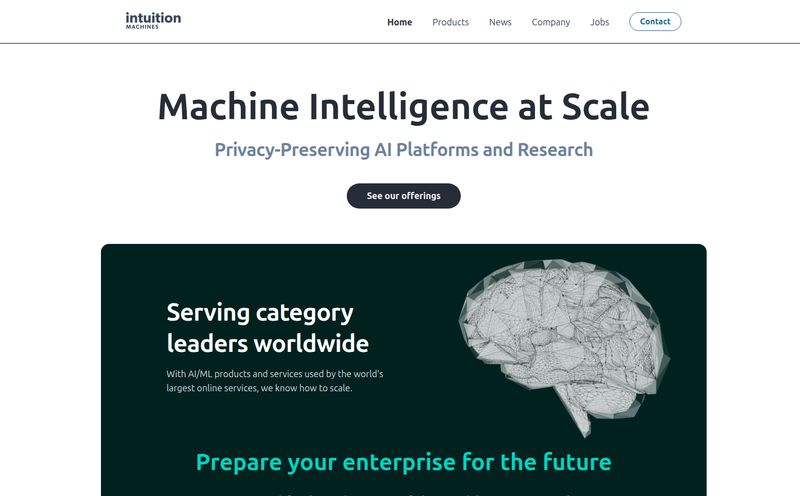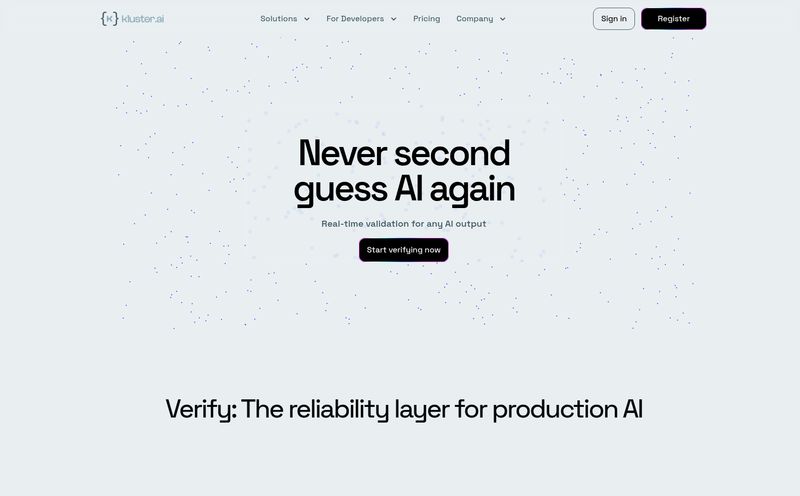As someone who’s been neck-deep in the SEO and digital content world for years, I’ve seen countless platforms promise to be the “next big thing.” You know the type. They come in hot with buzzwords, a slick landing page, and a whole lot of ambition. Most of them fizzle out. But every now and then, you come across something that just… feels different. Something that makes the little hairs on your arm stand up.
That’s the feeling I got when I first landed on Hexagram’s page. It’s minimalist, almost to the point of being mysterious. Just a pulsing, hypnotic gradient and a few social links. No flashy videos, no over-the-top promises. And yet, the core idea they’re selling is one of the most exciting things I’ve heard in the interactive entertainment space for a long, long time.
They’re talking about using AI and the cloud to create truly dynamic, responsive worlds. Worlds that don’t just have scripted events, but that live, breathe, and evolve based on what players do. Think about that for a second. It's a pretty bold claim.

Visit Hexagram
What Exactly is the Hexagram Platform? (And Why Should We Care?)
So what’s under the hood? From what I can gather, Hexagram isn't just another game engine like Unity or Unreal. It seems to be aiming for something more fundamental. It’s a platform designed from the ground up to be a world-forging machine. It's less about placing individual assets and more about setting up the rules of an ecosystem and letting it grow.
"Hexagram leverages artificial intelligence and cloud services to enable the creation of dynamic, ever-evolving worlds that respond to the actions of their human or digital inhabitants."
That’s the money quote right there. We're not talking about slightly smarter NPCs who know how to take cover. We’re talking about worlds where your actions could have real, lasting, and unpredictable consequences. Imagine cutting down a forest in a game, and the platform’s AI models the ecological impact—animals migrate, a river dries up, and a town downstream faces a famine. All without a developer having to script every single possibility. It’s like moving from a puppet show to a digital terrarium. You’re not just the player; you’re a catalyst.
For years, open worlds have gotten bigger, but not necessarily deeper. They are often a mile wide and an inch deep. Hexagram seems to be asking, “What if we could make them a mile wide and a mile deep?” That’s a question that gets me excited.
The Core Pillars: AI, Cloud, and Collaboration
From my analysis, their whole philosophy seems to rest on three big ideas. It’s the combination of these three that makes the concept so potent. It’s not just one cool feature; it’s a new way of thinking about development.
AI-Driven Worlds That Actually Live
Let’s be honest, AI in most games is… pretty basic. Enemies run on predictable paths. Quest-givers stand in the same spot for eternity, waiting for you to click on them. It works, but it breaks the illusion of a living world. Hexagram's promise of “AI-driven dynamic world creation” is the holy grail for many developers. This isn't just about procedural generation (PCG) that creates a random map layout. This is about procedural evolution. The AI isn't just a builder; it’s a digital dungeon master, constantly reacting and adapting the world to the story being created within it. The potential for emergent gameplay here is just off the charts.
Building Worlds from the Cloud
The second pillar is that it's a cloud-based platform. This is a smart, modern move. For developers, this could mean the end of wrestling with massive software installations and version-control nightmares. It means you can access your development environment from anywhere. For the worlds themselves, it means persistence and scale. A world that lives in the cloud can evolve 24/7, even when no one is logged in. It can process massive, complex simulations that would melt a local PC. This infrastructure is what makes the AI-driven dream technically feasible.
Breaking Down Silos with Collaboration
Game development can be an incredibly siloed process. The writers are in one corner, the artists in another, and the programmers are in a sound-proof room trying to stitch it all together. Hexagram explicitly states its platform is designed to “foster a culture of collaboration.” I picture something like a Google Docs for world-building, where a writer can define a narrative event, an artist can shape the landscape around it, and a designer can tweak the AI parameters—all within the same shared, live environment. This could drastically streamline the creative process and lead to more cohesive and interesting experiences. Anything that gets creators talking and working together more fluidly is a huge win in my book.
So, Who Is This For? The Indie Dev or the AAA Studio?
This is the big question, isn’t it? When you see a platform this ambitious, you immediately wonder about the target audience. Is this a tool for a small, scrappy indie team with a wild idea, or is this an enterprise-level solution meant to be licensed by the likes of EA or Ubisoft for their next-gen MMO?
Honestly? My gut says it could be both, but it probably leans towards the latter, at least for now. The sheer scale of the technology—blending advanced AI with heavy-duty cloud infrastructure—screams big budget. Large studios have the resources to really push a platform like this to its limits. Think of a persistent online world like Star Citizen or a future Grand Theft Auto Online, but with a world that genuinely changes based on the collective actions of millions of players.
That said, I wouldn't count the indies out. If Hexagram adopts a modern SaaS model—maybe a tiered subscription or a revenue-sharing agreement—it could completely empower small teams. It could allow a handful of creators to build worlds of a scale and complexity that previously required hundreds of developers. And that, my friends, is how you get real innovation.
The Elephant in the Room: The Missing Details
Alright, let’s address the obvious. The Hexagram website is beautiful but sparse. There’s no pricing page. No technical documentation. No gallery of projects built with the tool. It's all very... stealth mode.
And you know what? I'm okay with that. It tells me they are probably deep in development, focusing on the tech before they make a big marketing push. I'd rather a company take its time to get something this revolutionary right than rush out a half-baked product. Some might see the lack of information as a red flag, but in my experience, it often just means they're not ready for their closeup yet. I’ve hit refresh on their social media links more than a few times, hoping for a clue. Nothing yet.
The lack of a price tag is the biggest mystery. Is it free? Will it be a six-figure license? Will it be a per-seat subscription? My guess is they're still figuring that out, or they're operating on a case-by-case basis with early partners. For now, we can only speculate.
Frequently Asked Questions about Hexagram
- 1. What is Hexagram in simple terms?
- Think of it as an advanced platform for building interactive worlds, not just games. It uses powerful AI and cloud computing to create environments that can change and evolve on their own and in response to players' actions.
- 2. Is Hexagram just for making video games?
- While gaming is the most obvious application, their website mentions experiences "across gaming and beyond." This could include anything from advanced simulations for training and research to large-scale metaverse platforms or interactive art installations.
- 3. How is Hexagram different from Unity or Unreal Engine?
- While there's overlap, Unity and Unreal are more traditional game engines focused on graphics, physics, and providing a toolbox for developers to script everything. Hexagram seems more focused on the behavioral layer of a world—creating the systems that allow for unscripted, emergent narratives and consequences.
- 4. How much does the Hexagram platform cost?
- As of late 2024, there is no public pricing information available. This suggests the platform may still be in development, in a private beta, or targeting enterprise clients with custom pricing.
- 5. Is Hexagram a good choice for solo developers?
- Potentially, yes. While the technology is advanced, its collaborative and cloud-based nature could empower a single creator to manage and build a highly complex world that would otherwise be impossible. However, this depends entirely on its future accessibility and pricing model.
- 6. When will Hexagram be publicly available?
- There's no official release date. The best way to stay updated is to follow their social media channels, which are linked on their website.
My Final Thoughts
Look, it's easy to be cynical. We’ve all been burned by hype before. But Hexagram feels different. There's a quiet confidence to their approach. They're not shouting from the rooftops; they're building something that might just change the foundation of the buildings we all play in.
The convergence of AI, cloud computing, and a focus on deep collaboration is the right formula at the right time. Whether Hexagram itself becomes the household name, or simply inspires the next wave of development tools, the ideas they’re championing are, without a doubt, a glimpse into the future of interactive entertainment. I, for one, will be watching. Very, very closely.
Reference and Sources
- Hexagram Official Website
- An Overview of Procedural Content Generation - Game Developer
- Cloud Gaming Solutions - Amazon Game Tech



